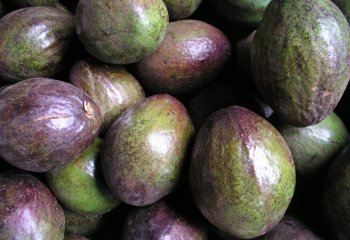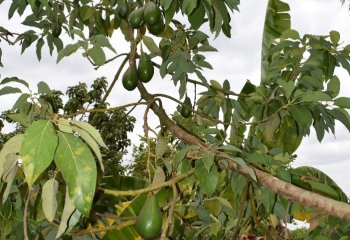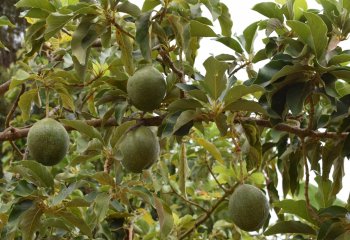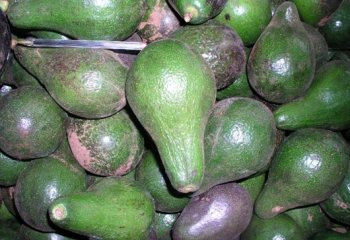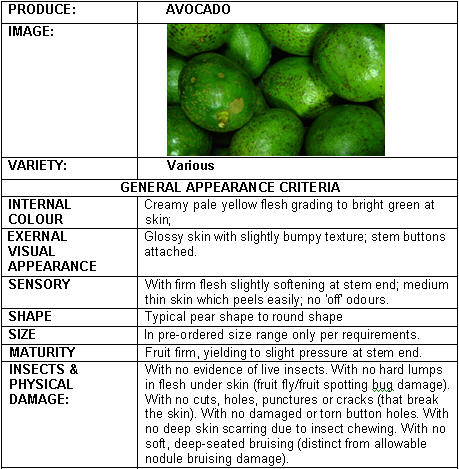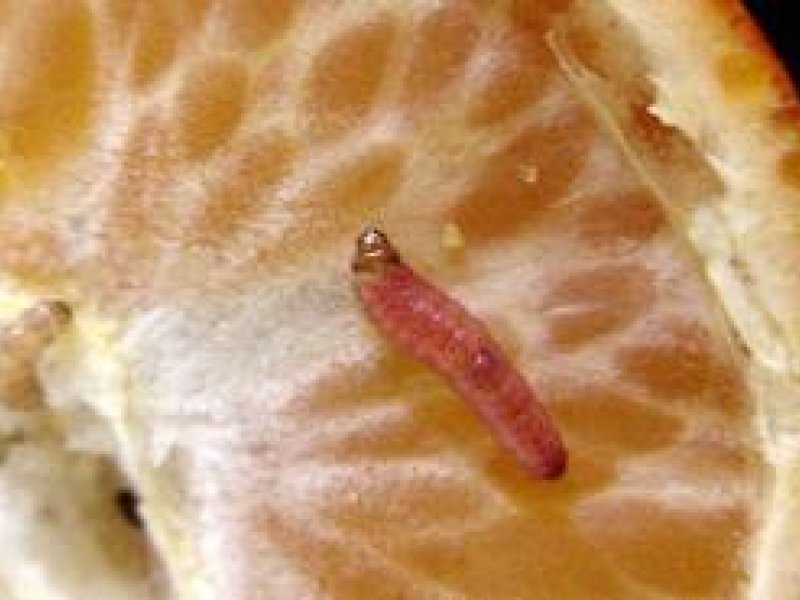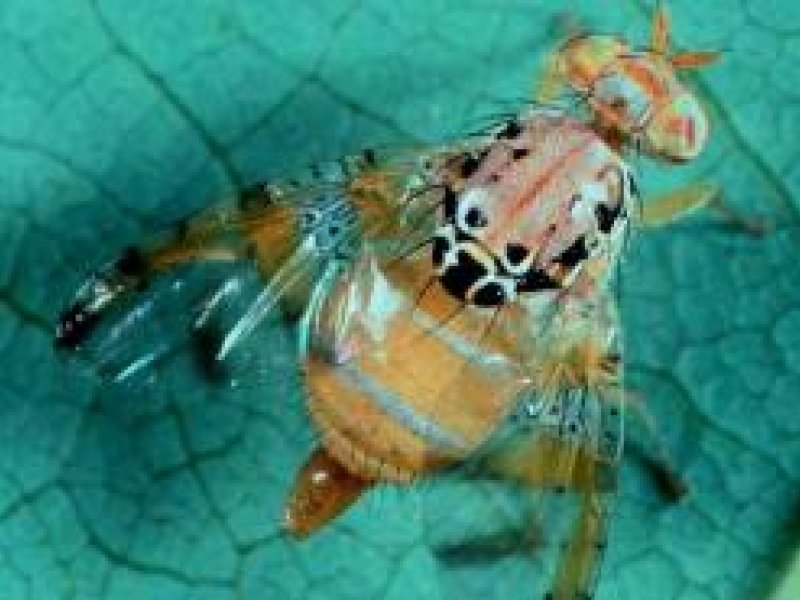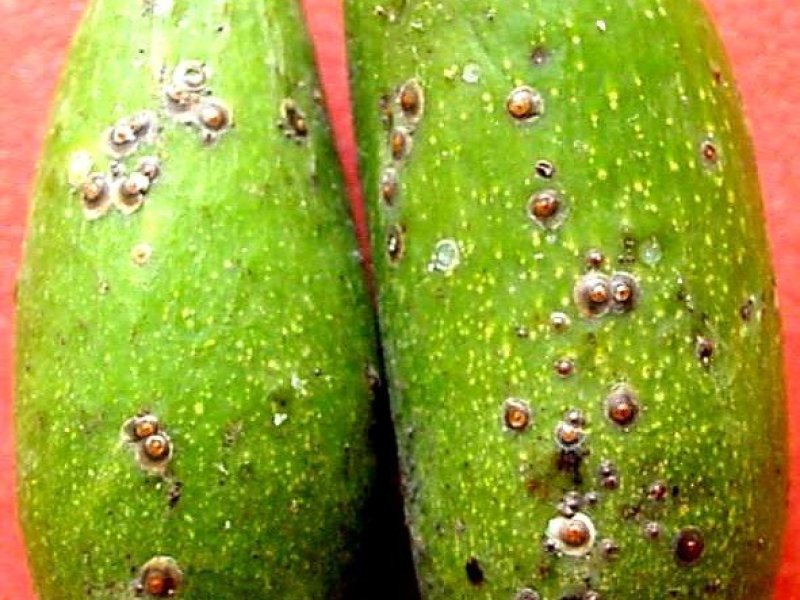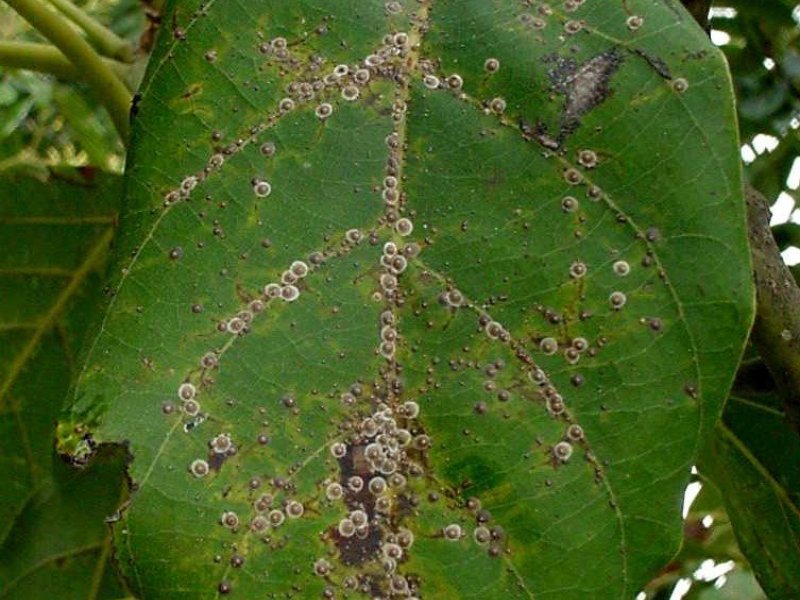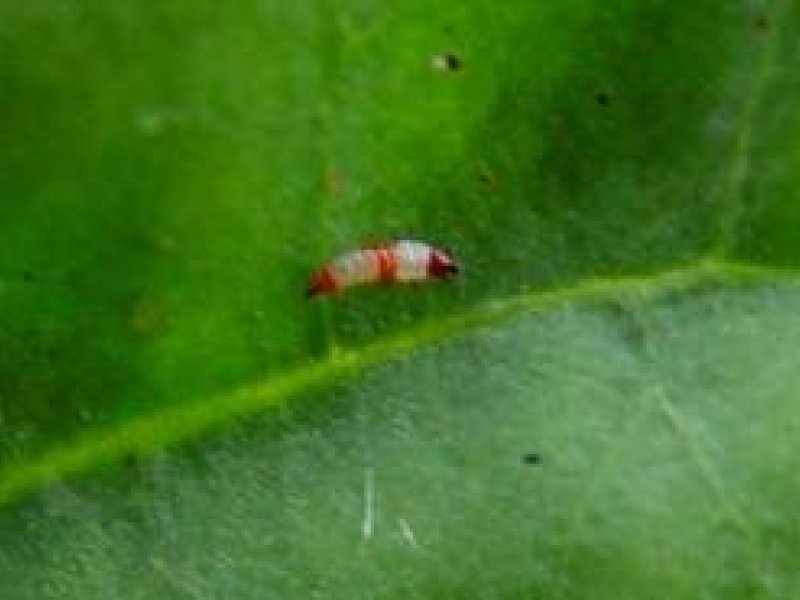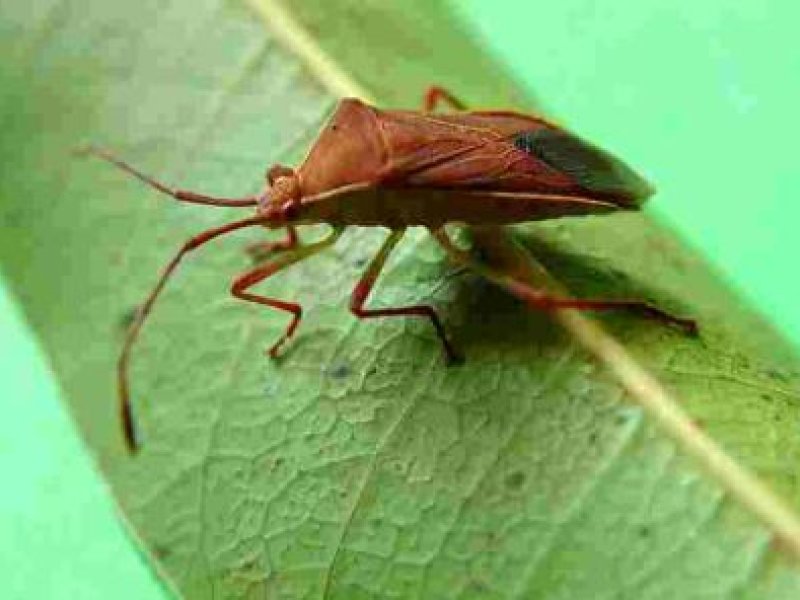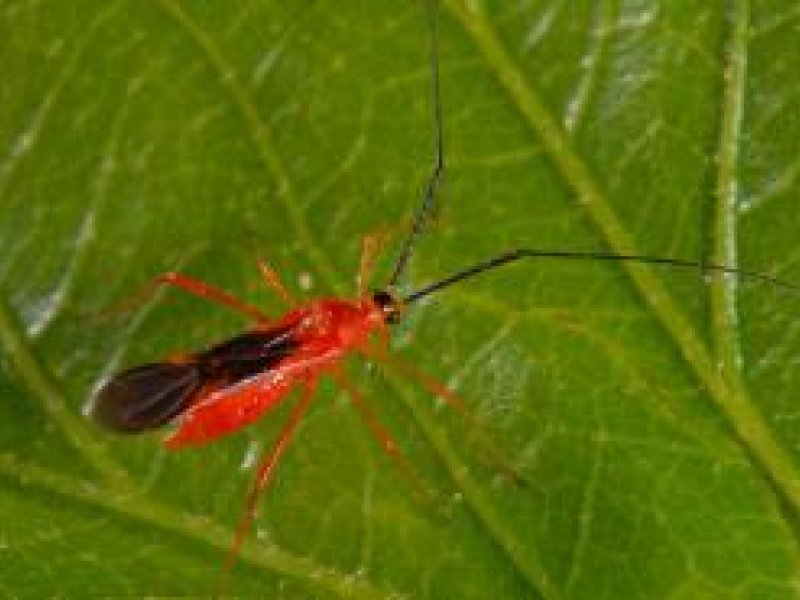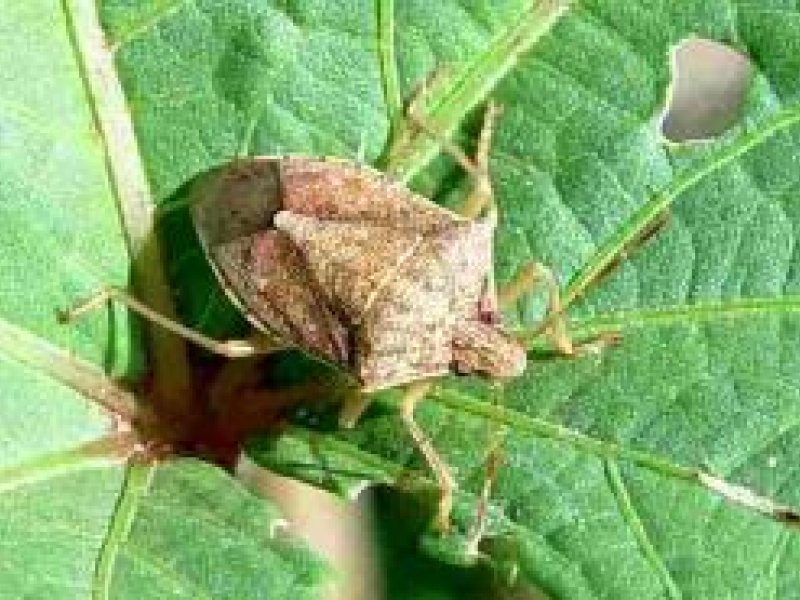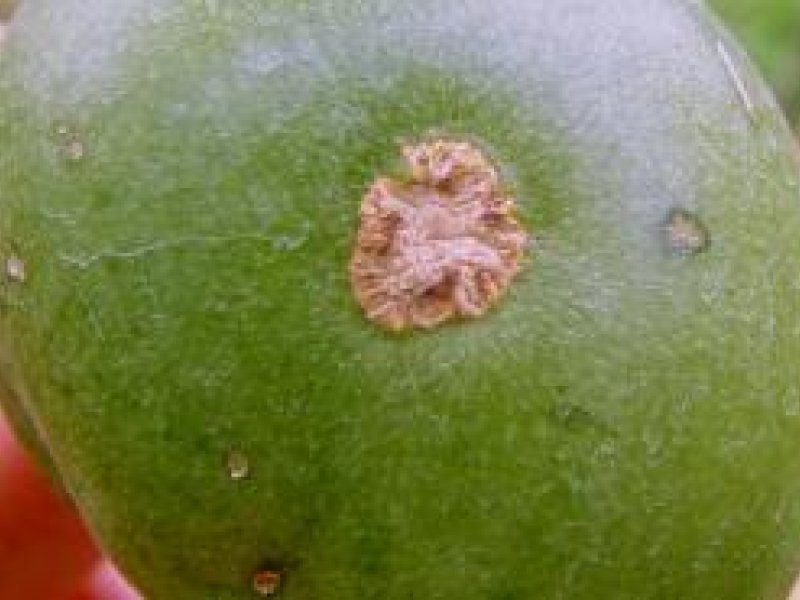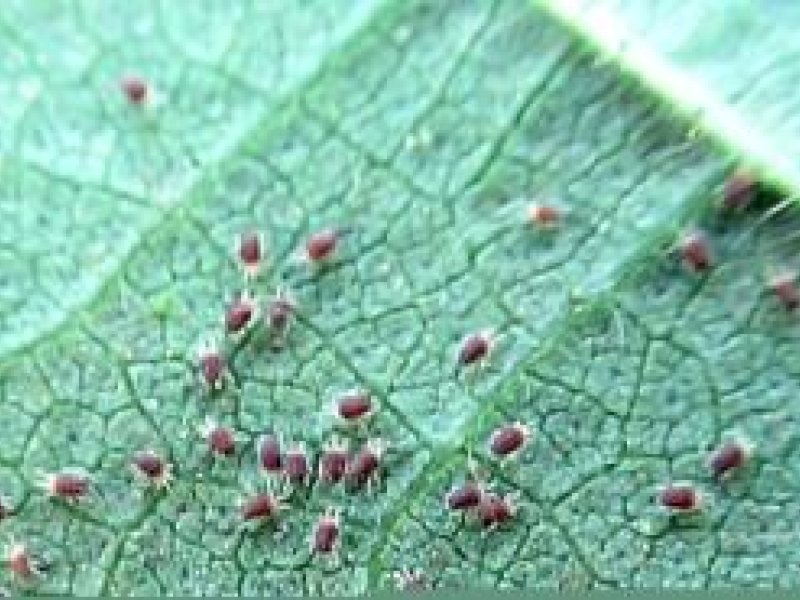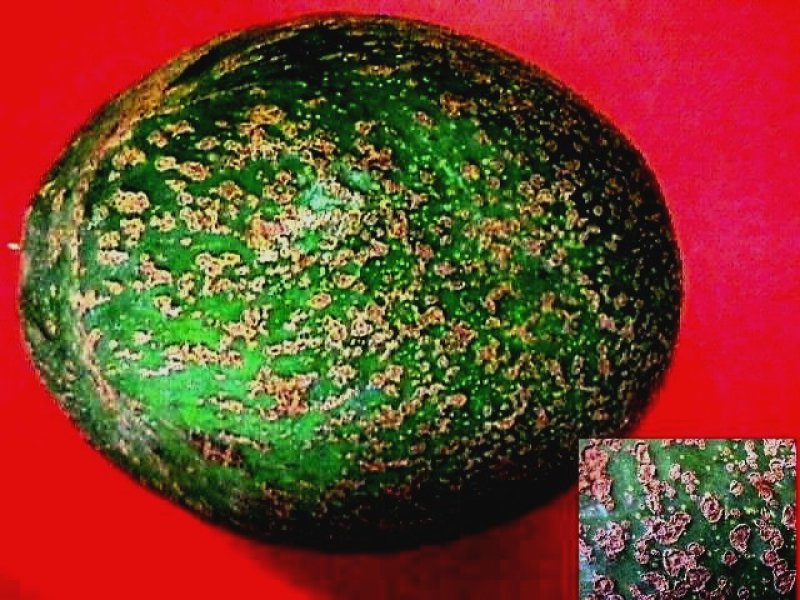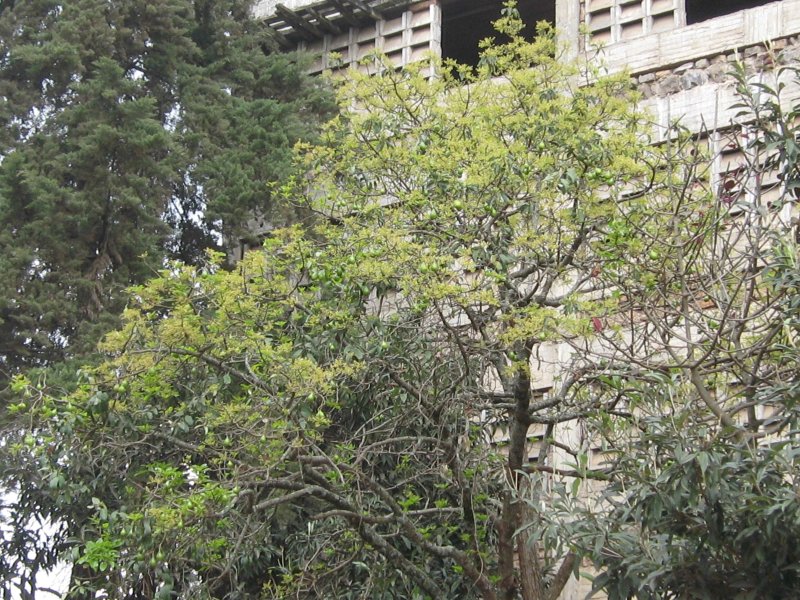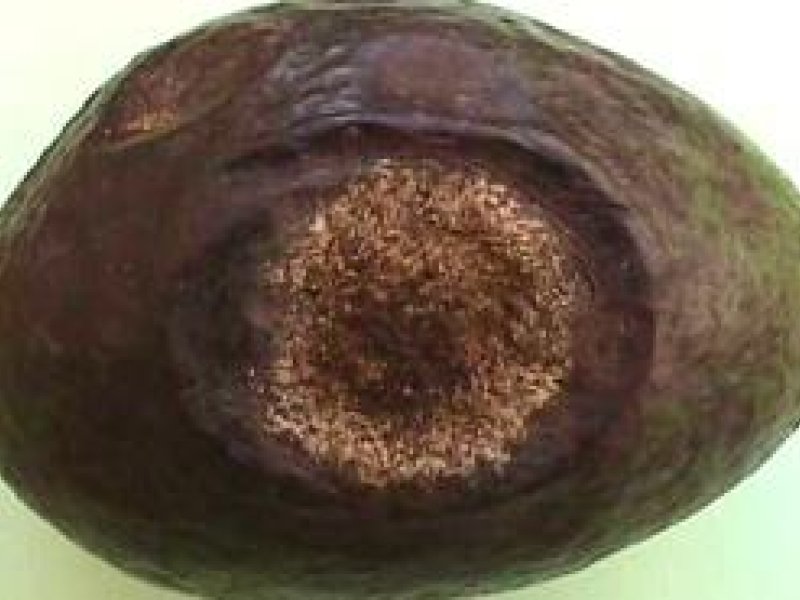Introduction
Species account
Avocado is a medium to large evergreen tree that typically grows to a height of between 9-20. While the tree is categorized as an evergreen, some varieties may shed their leaves briefly prior to flowering. The tree canopy can vary from low and dense to upright and asymmetrical. Leaves: shape vary from elliptic to oval or lanceolate, with a typical length of 7-41 cm. These leaves are usually covered with fine hairs and display a reddish hue when young, but as they mature, they become smooth, leathery, and take on a dark green color. Flowers: yellowish-green and measure approximately 1-1.3 cm in diameter. Fruit: a large, pear-shaped berry that has a thick, rough, dark green or blackish skin and a soft, creamy, pale green or yellowish pulp. The skin of the fruit varies in thickness and texture, and the fruit itself can be green, black, purple, or reddish in color when mature, depending on the variety. Avocado fruits can range in shape from spherical to pear shaped and can weigh up to 2.3 kg
Common avocado varieties
Fuerte
Hybrid of Guatemalan and Mexican races with thin skinned green-pebbled fruit of very good flavour. Fuerte is one of the major varieties in export markets
The tree is broad, very productive but susceptible to both Anthracnose and Scab.
This variety has many lines with different shapes; the pear shaped fruit is smooth, medium-thin skin that peels easily, with dense, pale green flesh with a good flavour preferred in the export market. Matures 6-8 months after flowering
Pear-shaped smooth, medium-thin skin that peels easily, with dense, pale green flesh with a good flavor.
Skin remains green when fruits are mature
Creamy, pale green flesh
Matures 6-8 months after flowering
Hass
- Vigorous grower and bears medium-sized, rounded, rough-skinned, black fruits. Propagates well. Matures 8-9 months after flowering.
- The tree grows tall and requires cutting back
- Distinctive for its tumbled leathery fairly thick skin that turns near black when fully ripe.
- he flesh closest to the skin is a lush pale lime green color and as it nears the central pit it develops a rich creamy yellow tone and softer, oil rich texture
- Oval-shaped fruit with small to medium seed
- Flavor creamy and smooth with a nutty and sweet finish
- Outstanding shelf-life and shipping characteristics
- One of the longest harvesting seasons.
‘Puebla’
- Spreading, dark green tree bearing deep purple to maroon round fruit. This variety is normally used as a rootstock. Matures 5-7 months after blossoming.
- Small compact fruits resembling “Hass”
- Fruit is deep maroon and smooth
- Fruit has a velvety flesh with nutty aroma and
- a rich butter tastes
- This variety is normally used as a rootstock
‘Pinkerton’
- Long, pear-shaped fruit with small seed
- Large fruit that weighs 225 – 510 g per fruit
- Medium thick green skin with slight pebbling
- Green skin deepens in color as it ripens
- Excellent peeling
- Creamy, pale green flesh
Nabal
Bears fruit in alternate years. Its green fruits have a good flavour. Matures 8-9 months after flowering.
Others: 'Reed', 'Simmonds', 'Booth 7&8', 'Pinkerton', 'Bacon', 'Lula' and 'Taylor'. These are grown but not exported ( Mugambi 2002)
Ecological information
Agronomic aspects
Propagation and planting
Select healthy seeds and plant them in boxes or seedbeds. Immediately after germination transplant the seedlings into 4 litre pots, tins or polythene bags. Water them regularly until they are pencil thick. Grafting should be carried out when the seedling reaches pencil thickness. Wedge grafting method is most successful. Grafting should be done at the point where rootstock is soft. The scion should be dormant at the time of grafting and should match the size of the stock. Wrap the grafting point thoroughly to exclude water from the union and to prevent it from drying out.
The subsoil may be used to make a basin around the tree. Water the seedlings immediately after planting if it is not in the rainy season. Shade the young plants with banana leaves or similar material after planting and when they are putting up a new flush. If planted in a windy area, a windbreak will be necessary to protect the plants from leaning to one side and to help prevent leaf shedding fruit drop and bruising.
Age of tree (years) | Nitrogen and potassium | Mijingu rock phosphate | Additional potassium Ashes (handfuls) | Manure or compost decomposed |
1-3 | 8 | 500 g | - | 15 Kg |
4-5 | 16 | 900 g | - | 15 Kg |
6-7 | 30 | 1.4 Kg | 1 | 30 Kg |
8-9 | 46 | 1.4 Kg | 2 | 30 Kg |
10-14 | 60 (three 20 litre buckets/year, mixed with 12 buckets of water, divided into several applications) | 2 Kg | 4 | 30 Kg |
15+ | 80 (four 20 litre buckets/year mixed with 16 buckets of water, divided into several applications | 2.5 Kg | 8 | 30 Kg |
Age of tree (years) | Chicken manure Kg/tree/year | Additional Mijingu Rock phosphate | Additional potassium Ashes - (handfuls) | Compost decomposed |
1-3 | 1.5 | 150 g | - | 15 Kg |
4-5 | 3 | 300 g | - | 15 Kg |
6-7 | 6 | 450 g | 1 | 30 Kg |
8-9 | 9 | 450 g | 2 | 30 Kg |
10-14 | 12 | 800 g | 4 | 30 Kg |
15+ | 15 | 1 Kg | 8 | 30 Kg |
Trace elements: In spite of heavy applications of manures and compost, deficiencies may occur in avocado orchards. Usually these are seen as various degrees of discoloration. Accurate analysis can be made from plant analysis laboratories. The following list can be used as a guideline:
Mineral | Symptom | Control |
Zinc | Mottled leaves with light yellow areas between the veins and abnormal development of growing shoots | Apply 250 g zinc sulphate for each year of age to a maximum of 4.5 kg/tree. The application should be done in a 60 cm circle around the tree |
Manganese | Progressive yellowing of the margins and interveinal parts of the leaves while the veins remain green | Spray the young leaves with foliar spray of manganese sulphate |
Iron | Loss of green colour in leaves | Apply 360 g iron chelate per tree in acid soils. In normal soils 250 g of iron sulphate in 10 l of water/per tree will correct iron deficiency |
Chlorine | High concentration of chlorine in the soil may cause leaf burn, also damage the root system | Apply lime and compost to neutralise the chlorine. |
Nutritive Value per 100 g of edible Portion
| Raw or Cooked Avocado | Food Energy (Calories / %Daily Value*) | Carbohydrates (g / %DV) | Fat (g / %DV) | Protein (g / %DV) | Calcium (g / %DV) | Phosphorus (mg / %DV) | Iron (mg / %DV) | Potassium (mg / %DV) | Vitamin A (I.U) | Vitamin C (I.U) | Vitamin B 6 (I.U) | Vitamin B 12 (I.U) | Thiamine (mg / %DV) | Riboflavin (mg / %DV) | Ash (g / %DV) |
| Avocado raw | 160 / 8% | 8.5 / 3% | 14.7 / 23% | 2.0 / 4% | 12.0 / 1% | 52.0 / 5% | 0.5 / 3% | 485 / 14% | 146 IU / 3% | 10.0 / 17% | 0.3 / 13% | 0.0 / 0% | 0.1 / 4% | 0.1 / 8% | 1.6 |
Climatic conditions, soil and water management
Depending on variety, avocado grows well from 0-2100 m above sea level (asl). The varieties 'Tonnage', 'Simmonds', 'Booth 7&8' are suited to lowland areas between 90 and 800 m asl. 'Hass' and 'Nabal' are suited to altitudes 800-2100 m asl. 'Fuerte' and 'Puebla' are suited to altitudes 1500-2100 m asl.
Avocado grows successfully on many types of soil provided they are deep, with good water holding capacity and free draining. Water logged or saline soils are unsuitable because avocado plants are sensitive to excessive soil moisture and high salinity. The optimum pH is 5.5-6.5. Temperatures between 16 and 24°C are good for growing avocados. Maximum temperature for avocado is 33°C. Above this temperature avocado fruits and trees can be damaged. High temperatures and direct sunshine can cause sunburn damage to exposed fruit. Avocado will not grow where frost can occur. An annual rainfall 1200 mm is optimal for good production. Water requirements are not less than 1000 mm/year. If supplementary water is required not more than 50 mm at a time may be applied. Climatic conditions with alternating dry and rainy seasons are best for avocados.
| Age of tree (years) | Nitrogen and potassium Litres animal urine mixed 1:4 with water in split applications | Mijingu rock phosphate | Additional potassium Ashes (handfuls) | Manure or compost decomposed |
| 1-3 | 8 | 500 g | - | 15 Kg |
| 4-5 | 16 | 900 g | - | 15 Kg |
| 6-7 | 30 | 1.4 Kg | 1 | 30 Kg |
| 8-9 | 46 | 1.4 Kg | 2 | 30 Kg |
| 10-14 | 60 (three 20 litre buckets/year, mixed with 12 buckets of water, divided into several applications) | 2 Kg | 4 | 30 Kg |
| 15+ | 80 (four 20 litre buckets/year mixed with 16 buckets of water, divided into several applications | 2.5 Kg | 8 | 30 Kg |
Adapted from AIC advice for conventional farmers replacing conventional fertilisers with natural products to get the same amount of nutrients.
If chicken manure is available, it can be used instead of animal urine as follows, but spread on top of the soil far enough from the tree stem to avoid burning the stem:
| Age of tree (years) | Chicken manure Kg/tree/year | Additional Mijingu Rock phosphate | Additional potassium Ashes - (handfuls) | Compost decomposed |
| 1-3 | 1.5 | 150 g | - | 15 Kg |
| 4-5 | 3 | 300 g | - | 15 Kg |
| 6-7 | 6 | 450 g | 1 | 30 Kg |
| 8-9 | 9 | 450 g | 2 | 30 Kg |
| 10-14 | 12 | 800 g | 4 | 30 Kg |
| 15+ | 15 | 1 Kg | 8 | 30 Kg |
Trace elements: In spite of heavy applications of manures and compost, deficiencies may occur in avocado orchards. Usually these are seen as various degrees of discolouration. Accurate analysis can be made from plant analysis laboratories. The following list can be used as a guideline:
| Mineral | Symptom | Control |
| Zinc | Mottled leaves with light yellow areas between the veins and abnormal development of growing shoots | Apply 250 g zinc sulphate for each year of age to a maximum of 4.5 kg/tree. The application should be done in a 60 cm circle around the tree |
| Manganese | Progressive yellowing of the margins and interveinal parts of the leaves while the veins remain green | Spray the young leaves with foliar spray of manganese sulphate |
| Iron | Loss of green colour in leaves | Apply 360 g iron chelate per tree in acid soils. In normal soils 250 g of iron sulphate in 10 l of water/per tree will correct iron deficiency |
| Chlorine | High concentration of chlorine in the soil may cause leaf burn, also damage the root system | Apply lime and compost to neutralise the chlorine. |
Pruning
Initial pruning may be done to give the tree a good shape. Otherwise pruning is limited to the removal of dead wood and parasitic plants.
- Remove all sucker and dead branches from main trunk branches.
- Prune canopy to keep the tree to a height of 5-8 m and for ease of picking. The tree is very susceptible to sunburn, therefore pruning should be minimised.
- Prune the larger tree roots by cultivating to a depth of 50 cm around the edge of the tree canopy.
The area around the tree should be kept clean by weeding and removal of all fallen fruits.
Harvesting
Harvesting starts at 3-4 years from planting but a good yield is obtained from the 6th year onwards. It is not easy to tell when the fruits are ready for harvesting unless they are of the varieties that change color at maturity. To ensure high-quality fruit and prevent postharvest decay, it is important to harvest fruit without causing mechanical damage such as cuts, scratches, or bruises, which can serve as entry points for pathogens. Typically, avocado fruit is harvested by hand using soft picking bags or plastic crates to prevent damage. Clippers are utilized for fruits that are within reach, while a long-handled picking pole equipped with a sharp "V" on the metal rim with a strong cloth bag to catch the fruit is employed to cut the stem for taller trees. After harvesting, fruit should be immediately moved to the shade to prevent moisture loss. Avocado fruit should reach the packing house within two hours of picking, and a small portion of the pedicel should be left attached to the fruit. Fruit should not be harvested during wet weather conditions because the presence of water droplets on the fruit surface can favor the incidence of postharvest diseases during distribution and storage. Fruit picked late in the season may ripen faster, especially in warmer areas.
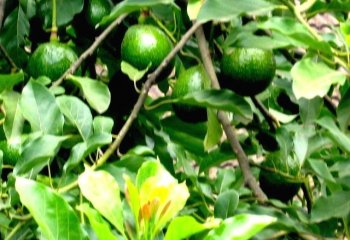
Fresh Quality Specifications for the market in Kenya
Table 1: Proximate nutritional content of 100 g of avocado (Persea americana) ripe raw fruit.
Food Name | Avocado, ripe, raw | Recommended daily allowance (approx.) for adultsa |
Proximate composition and dietary energy |
|
|
Edible conversion factor | 0.71 |
|
Energy (kJ) | 761 | 9623 |
Energy (kcal) | 185 | 2300 |
Water (g) | 74 | 2000-3000c |
Protein (g) | 1.6 | 50 |
Fat (g) | 19.6 | <30 (male), <20 (female)b |
Carbohydrate available (g) | 0 | 225 -325g |
Fibre (g) | 4 | 30d |
Ash (g) | 1.9 |
|
Mineral composition |
|
|
Ca (mg) | 19 | 800 |
Fe (mg) | 1 | 14 |
Mg (mg) | 25 | 300 |
P (mg) | 41 | 800 |
K (mg) | 281 | 4,700f |
Na (mg) | 7 | <2300e |
Zn (mg) | 0.39 | 15 |
Se (mcg) | 0 | 60 |
Cu (mg) | 0.30h | 0.9 |
Bioactive compound composition |
|
|
Vit A RAE (mcg) | 2 | 800 |
Vit A RE (mcg) | 5 | 800 |
Retinol (mcg) | 0 | 1000 |
b-carotene equivalent (mcg) | 27 | 600 – 1500g |
VIT D (mcg) | 0h | 5 – 15* |
VIT E (mg) | 0.6h | 9 |
Thiamin (mg) | 0.07 | 1.4 |
Riboflavin (mg) | 0.15 | 1.6 |
Niacin (mg) | 1.8 | 18 |
VIT B6(mg) | 0.22h | 1.3 |
Folate (mcg) | 67 | 400f |
Vit B12 (mg) | 0 | 3 |
Vit C (mg) | 14 | 60 |
Recipes
Information on Pests
False codling moth (Cryptophlebia leucotreta) The false codling moth is small (wingspan of 16 - 20 mm), dark brown to grey in colour. The moths are active at night. Female moths lay single eggs mostly on the fruit. After emerging from the egg, the young caterpillar tunnels into the fruit and the fruit sap thus liberated forms a typical white crystalline excrescence on the surface of the fruit. When moths lay eggs on young fruits the caterpillars usually die and thus large caterpillars are seldom found. However, the caterpillars are able to develop if fruits are approaching maturity when infested. The young caterpillar is creamy-white with a dark brownish head. With age the body turns pinkish red. The fully-grown caterpillar is 15 to 20 mm in length. When mature the caterpillar leaves the fruit and pupates in the soil or beneath surface debris. What to do:
|
Fruit flies Avocados, especially thin-skinned varieties might be attacked by various species of fruit flies. Some fruit flies lay eggs under the skin of the fruit that is just beginning to ripen, but others attack young and old fruit. When the fruit reaches about the size of a golf ball a sting lesion appears as a slight puncture mark surrounded by a white exudate. As the fruit develops the lesion becomes dry and turn into distinct star-shaped crack on the skin surface. What to do:
|
Scales Scales are small, stationary brown greenish insects occasionally found sucking sap from avocado leaves. Soft scales such as Coccus spp. excrete large amount of honeydew, which lead to the development of sooty mould on leaves, branches and fruit. Honeydew attracts ants, which while feeding on the honeydew protect scales from natural enemies. Armoured scales such as the coconut scale (Aspidiotus destructor) may encrust young twigs, leaves and fruit. They do not produce honeydew. Scales are usually not a problem in avocado orchards; however, damage can be serious on young tress and small twigs may be killed. Although the presence of scales on the skin of fruit does not cause internal damage, it may lead to rejection of fruit, especially if grown for export. What to do:
|
Thrips are small, slender insects (1-2 mm long) with two pairs of fringed wings. Adult thrips attacking avocado are dark brown or black, and the immature stages are yellow in colour. The red-banded thrips can be distinguished by a bright red band across the abdomen of immature thrips. Thrips are sometimes troublesome pests in avocado. They may cause damage to the leaves and fruit. Affected parts become whitish or silvery and are usually covered by dark-coloured droppings. On fruit, feeding begins near the calyx, gradually producing a scar that can cover the whole fruit. Attacked fruits develop a leathery brown skin. Feeding is most common on young fruit; economic damage generally occurs on fruit up to 2 cm in length (2-3 weeks after fruit set). Older fruit with thicker skin is less susceptible to attack. What to do:
|
Bugs (Coconut bugs, Helopeltis bugs, stink bugs) Adult coconut bugs (Pseudotheraptus wayi) are brown in colour and 10 to 15 mm long. Nymphs are red brown to green brown in colour and have long antenna. The adults and nymphs of the coconut bug feed on young and mature avocado fruit. Bug feeding causes necrotic bruise-like depressions. A hard lump develops, which can be easily removed when the fruit is peeled. Helopeltis bugs also known as tea mosquito or mired bug are slender, delicate bugs, about 7- 10 mm long and have long legs and antenna. The females are red and the males are brown to yellowish red. The bugs prefer to feed on young plant tissue piercing the shoots, stems, leaves peduncles,petioles and fruits. Their feeding causes brown necrotic patches. Attacked leaves present angular lesion, which often drop out leaving holes as it attacked by biting insects. Feeding on young shoots causes dieback of the shoots. Feeding on fruits causes first a dark water-soaked mark around the feeding puncture, turning into a lesion with a light brown centre and black edge. The fruit may exude sap that forms a whitish deposit as it dries. Stink bugs are shield-shaped bugs variable in size (6 to 15 mm long) and colour (green to brown or reddish brown). They emit a characteristic unpleasant odour when disturbed. They usually feed on the developing fruit. The feeding punctures cause local necrosis resulting in fruit spotting, and deformation. What to do:
|
Spider mites (Oligonychus spp.) Attack by spider mites (Oligonychus spp.) produce circular necrotic spots covered by dense webbing. As mite populations increase feeding causes leaf drop. These mites are more damaging to 'Haas' variety; 'Fuerte' variety is less affected. Feeding by broad mites (Polyphagotarsonemus latus) causes leaf distortion. These tiny mites (0.1-0.2 mm long) cannot be seen with the naked eye, and are even difficult to detect with a hand lens. An attack by the broad mites can be detected by the symptoms of damage. Their feeding produces discolouration,necrosis and deformation of tissues. What to do:
|
Information on Diseases
The fungus readily infects young, succulent tissues of leaves, twigs and fruits. Lesions appear as small dark spots, slightly raised, oval to elongated. These spots join up, giving a corky appearance to the surface of the fruits, impairing the appearance but not the internal quality of the fruit. Fruits are only susceptible when young until about half size development. The fungus requires moist conditions for sporulation and infection. What to do:
|
Avocado root rot (Phytophthora cinnamomi) This disease can attack trees of any size and age. Leaves of infected trees are small, usually pale or yellow green, are often wilted and fall prematurely giving the tree sparse appearance. In advanced stages of the disease, branches die-back and fruit remains small and crop yield drastically reduced. Feeder roots get blackened, decayed and died. Infected trees die prematurely. The disease is prone in areas subject to flooding and in poorly drained soils. The fungus can be spread or introduced to new areas by use of infected seeds, infested soil, irrigation water containing spores of the fungus and infected seedlings. The host range of the fungus includes Acacia, Camellia, Casuarina, Cypress, Eucalyptus and Grevillea. What to do:
|
Anthracnose (Colletotrichum gloeosporioides) This fungal disease is primarily a post-harvest problem when fruit is at maturity stage. Infection takes place when fruit is still very young and the fungus stays dormant till the fruit ripens. The disease appears as depressed spots on the fruit and the spots are manifested as a rot, which can penetrate deep into the flesh. In wet weather, the spots may be covered with mass of slimy, salmon pink fungal spore mass. The disease may develop very rapidly in storage if conditions in storage are humid and warm. The anthracnose fungus lives saprophytically on twigs, rotten fallen fruits and dead or dying infected leaves. The fungus is spread by water splash. What to do:
|
Cercospora fruit spot (Pseudocercospora purpurea) The disease is primarily a problem to quality of fruits. The severity of infection varies from season to season and can cause losses of up to 60%. The lesions appear as small light-yellow spots on fruits and leaves. They later become reddish brown and eventually become hard and crack. Mature fruits are resistant. The disease development is favoured by humid conditions and high temperatures. The fungus is essentially spread by water splash and its spores are also wind-borne. What to do:
|


